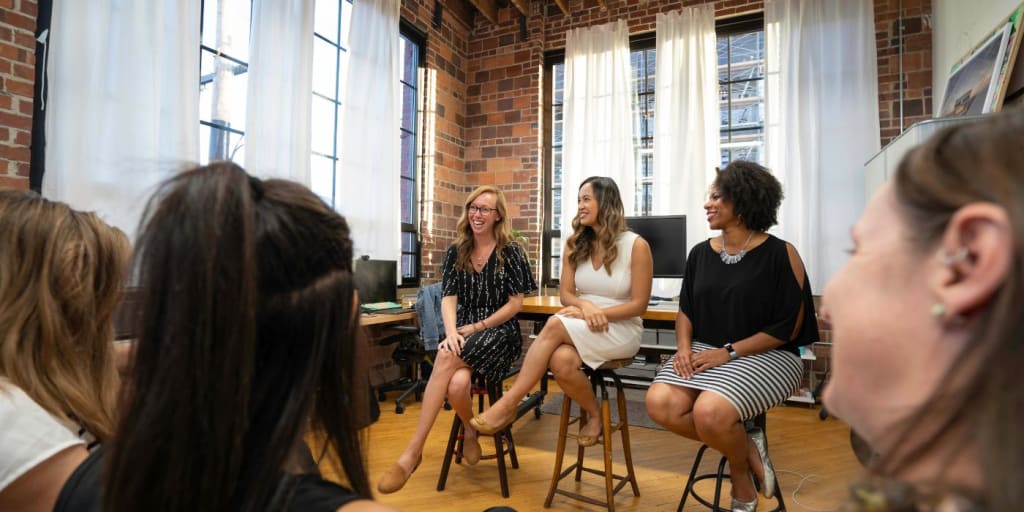
Citizen’s Assemblies are one of the many innovative ways local governments are engaging communities up and down the country. Involving regular people on a democratic panel — weighing up the pros and cons of potential policies — is a chance for councils to showcase their commitment to diversity, save money on private consultancy fees, and make better decisions the first time around.
What is a Citizen’s Assembly?

A Citizen’s Assembly is a democratic exercise that brings people together to debate and make recommendations on a complex (but important) issue. You can think of it like a jury, except its participants are deliberating on public policy as opposed to a criminal case.
Typically, they’re convened to solve problems that are considered too big in scope for a council alone to tackle — with climate change and healthcare being some of the most popular topics for a citizen’s advisory panel. Notice how that list also uses the term Citizen’s Jury? Well, it’s essentially the same concept except run on a smaller scale, with fewer participants and a shorter time frame.
Our older readers may remember the Channel 4 programme ‘The People’s Parliament’, where randomly-selected participants were given the chance to take part in a mock Parliament and debate tough questions like sentencing laws or devolution.
The idea became political reality in 2017, when Westminster convened a Citizen’s Assembly on Brexit to give public direction to the debate. Since then, dozens of these panels have been called at both the national and local level in the UK, including the prominent 2020 citizens climate assembly.
The Benefits of Citizens Assemblies

The earliest Citizens’ Assemblies were held in Ancient Athens, whose inhabitants saw them as the most direct and fair way of making decisions. We do things a little differently today, with most democratic countries having an elected parliament and local councils to represent the views of ordinary people.
The problem is, if you take a look at some of the “representative” bodies today, you’ll notice that they aren’t always that representative in practice. For instance, a study by the Local Government Association revealed that, among councillors in England; 40% are retired, 59% are men, and only 8% are from ethnically diverse backgrounds. It’s fair to say that this has caused a disconnect between regular people and politics — leading to policies that aren’t inclusive and a general distrust among minority groups.
Citizens’ Assemblies address this problem head-on by putting decision-making power right back in the hands of the people (subject to due process, of course!). Let’s cover the main arguments that have persuaded local authorities to start using them:
- Cost savings: Citizens’ advisory panels reduce the need for expensive consultants by instead tapping into the knowledge and experiences of the community.
- Trust: When local people are directly involved, it helps rebuild trust in politics, making people feel their voices are not only listened to but acted upon.
- Diverse representation: Assemblies bring together people at random from all backgrounds, including non-voters and hard-to-reach groups.
- Better decisions: Including those most affected by policies leads to smarter, more practical decisions.
How to Set Up An Inclusive Citizens Assembly in 10 Steps
1) Identify the Issue

A suitable topic for a Citizens’ Assembly is one that is complex and involves competing interests, difficult trade-offs, and significant impact on different groups.
For example, the decision to pedestrianise a town centre would create both ‘winners’ and ‘losers’. Residents may enjoy a car-free space, but commuters may be concerned about the lack of transport options, and business owners might be unsure how it affects foot traffic.
This type of issue benefits from deeper discussion and diverse perspectives, also known as deliberative democracy. On the other hand, a simpler topic like a park design, where the stakes and impacts are clearer, would be better suited to a standard public consultation.
Since Citizen’s Assemblies require extra planning and resources, it’s best to save them for issues that genuinely require extended deliberation.
2) Decide on the Size, Timescale, and Budget

Citizen’s Assemblies typically run for several weeks or months, depending on the complexity of the issue. Some are even recurring, like Newham Council’s permanent assembly.
To ensure a representative sample, citizens assemblies should ideally involve at least 40-100 members. This allows for diversity across age, gender, and other demographics.
Budgeting is also crucial — participants should be compensated for their time, usually around £50-£75 per day. Assembly costs will vary depending on size and length, and earmarking extra funds to cover unexpected costs is good practice.
Citizens’ Juries, by comparison, are smaller (around 12-24 members), run for shorter periods, and are best for highly-focused issues at the same cost per assembly member.
3) Define the Scope and Powers of the Citizens Assembly

Citizens’ Assemblies require local authorities to delegate some of their decision-making power and resources to the public. The extent of this delegation is flexible — there’s no set rule for how much authority or funding to hand over. However, it’s generally expected that the assembly’s recommendations will be considered seriously, with some authorities even making the results binding.
The more decision-making power granted, the higher up it sits on Arnstein’s Ladder of Participation, meaning participants are more likely to treat it as a meaningful use of their time. Make sure to clearly define the powers of each party; this sets the expectations from the offset and can encourage stronger engagement.
4) Recruit a Diverse Group

A truly representative Citizens’ Assembly should reflect the cultural diversity of the local area. To achieve this, there should be no risk of bias in the selection process, with participants ideally selected at random by lottery.
Some local authorities use random stratified sampling to make certain that the assembly includes different ages, genders, ethnicities, and backgrounds.
For certain topics, such as policies that disproportionately affect specific groups (e.g., housing policies for low-income residents), it may be appropriate to oversample those directly impacted. This way, their voices are strongly represented and the results are balanced in their favour.
5) Plan for Accessibility

A Citizens’ Assembly would be a rather pointless activity if certain groups were unable to participate due to accessibility barriers. After all, their greatest strength is their inclusivity!
So, if the assembly is in-person, local authorities should reimburse travel costs and offer childcare or eldercare support to its members. Venues should only be selected if they are fully accessible to those with mobility challenges. And, if the assembly includes non-native speakers or those with hearing aids, they’ll need specialist support staff like translators.
It’s also good practice to offer digital participation options for those who cannot attend in-person, such as working parents or hospital patients.
We created the Dialogue platform for exactly this task. Assembly members can use it as a shared space for posting ideas, leaving comments, and rating ideas. Plus, it’s built to the latest Web Content Accessibility Guidelines, meaning it’s easy to navigate and use with tools like speech recognition software and screen readers.
Many people prefer this method of engaging because it’s quick, simple, and reduces travel times.
6) Provide Balanced Information

A key part of the Citizens’ Assembly is making sure participants have access to balanced, accurate, and comprehensive information. Not everyone has the time to research a particular topic in advance, and those that do may not know the full facts of the case, like opposing viewpoints or considerations.
So, the local authority should select expert witnesses with different perspectives and prepare materials that are clear and free of any jargon or ‘legalese’. Assembly members need time to ask questions, review data, and discuss findings openly.
7) Facilitate Fair Discussion Within the Group

The Citizens Assembly should be a place where everyone feels comfortable contributing in their own way. This inevitably requires facilitation of some kind by the local authority. Otherwise, conversations risk being dominated by the loudest or most passionate voices, which can lead to skewed results and a loss of trust.
Engagement officers must maintain order and a culture of respect within the group. For one, that means giving participants equal time to speak. It also means being alert to individual concerns or requests. For instance, some people may prefer to offer anonymous or written responses to sensitive topics, if they don’t feel like speaking aloud. A level playing field is an environment ripe for constructive dialogue.
8) Keep the Wider Public Engaged

A Citizen’s Assembly should be run with the knowledge and backing of the broader community. Use in-person events like pop-up stalls, regular columns in local newspapers, and articles on your online consultation hub to share updates. You could discuss how the assembly is progressing, what’s being discussed, and general info on how proposed policies could impact the wider public. Engagement officers should encourage feedback and provide avenues for citizens not directly involved in the assembly to share their views.
9) Deliver Results Transparently

This one might seem obvious, but the findings of the Citizen’s Assembly should be released in their true state, without any edits. The only exception to this rule is on the grounds of privacy, such as redacting the names and identifying information of individual members.
Also, consider the requirements under the Local Government Transparency Code, which mandates the publication of financial details like contracts, expenditure, and payments associated with the assembly exercise.
10) Publish a Final Findings and Recommendations Report

The final report should be clear and concise, written for someone with no prior knowledge of the assembly. It should start with the basics, such as:
- What issue was identified by the authority?
- What were the objectives of the assembly?
- What questions were posed to members?
Once the context has been covered, you can talk the reader through the proposed policies and any competing interests or difficult trade-offs identified by the local authority — essentially, justifying why the exercise was necessary. From here, break down the reasons why the assembly came to its conclusions, and include any vote tallies or additional comments left by members on the proposals.
Conclusion
The local government funding crisis has encouraged councils to look for new, innovative methods of community engagement in the policymaking process. Citizens’ Assemblies have enjoyed a surge in popularity, both in the UK and abroad, due to their cost-effective nature at finding community-backed consensus on complex issues.
They offer a fresh alternative to representative politics that can rekindle public interest in topics suffering from ‘consultation fatigue’, and highlight a commitment to diversity and inclusivity.
On the important topics that affect us all, who would you rather be crafting policy: private consultants or the people themselves?
———
Dialogue is the go-to consensus platform for government to run Citizen’s Assemblies, Citizens Juries, and other Advisory Panels. You can use it to share information clearly, invite thoughtful group discussions, and provide an accessible experience for all.
Book a free demo and we’ll show you how it works in action.